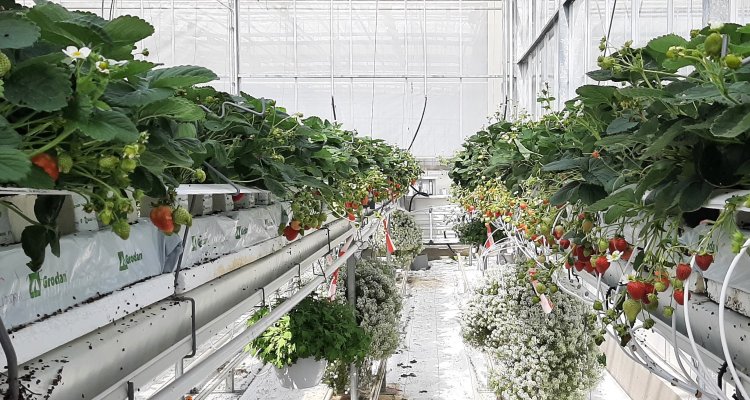
News
A redesign for nursery and production of strawberries
How can the sustainability of the strawberry cultivation be accelerated? The Greenhouse Horticulture and Flower Bulbs Business Unit of Wageningen University & Research tackled this question as part of the Green Crop Protection Knowledge Impulse project of the Ministry of Agriculture, Nature and Food Quality. WUR developed a prototype for a new cultivation and production system. Researcher Kirsten Leiss: “It would be great if growers implemented parts of that prototype in the coming years.”
With the Green Crop Protection Knowledge Impulse project, the Ministry of Agriculture, Nature Management and Food Quality is focusing on accelerating the sustainability of crop protection in a number of sectors, including arable farming, cultivation of flower bulbs, fruit trees and strawberries. The project has been running for 4 years (2017-2022) but has been extended for 3 years.
The design for a resilient cultivation system should lead to a reduced dependence on crop protection products, reduction of emissions and residues and strengthening the market position of Dutch growers.
Four pillars
The re-design for a resilient strawberry cultivation system consists of four pillars. To limit the use of crop protection products, a clean start is t necessary first. This is done by starting the cultivation from seed (instead of cuttings). The number of varieties that are suitable for propagation via seed is currently still small, but that number is increasing.
In addition, cultivation is done on rock wool for targeted application of water and fertilizers. However, it does require a different way of growing.
The third pillar is to transfer nursery as well as production into the greenhouse. Until now, strawberry nursery is mainly done outside in the open air. In a greenhouse, diseases and pests can be better kept out, the climate can be controlled and biological crop protection can be used in a more targeted manner.
Finally, it is important that more robust varieties are introduced, thus varieties that are more resistant to many diseases and pests. An alternative is working on the resilience of existing varieties. This can be done by use of elicitors (substances that 'turn on' the plant defense).
Additional lines of defense
In addition to the 4 pillars, 3 additional lines of defense have been added to the system: silicon added as a nutrient and the use of UVC to protect the crop against mildew and placing banker plants as a home for natural enemies.
The four pillars are partly revolutionary, says Leiss. This especially applies to growing from seed. Other steps are increasingly being applied in practice: cultivation in the greenhouse and cultivation on rock wool. Leiss: “The prototype scores very well in the Harmonized Risk Indicator (HRI) as an environmental indicator that specifies how many active substances have been used. The resilient cultivation system shows that it is possible to grow strawberries without Candidates for Substitution and almost without any crop protection products.” The research will continue until 2025 in order to test the integrated approach over several years.